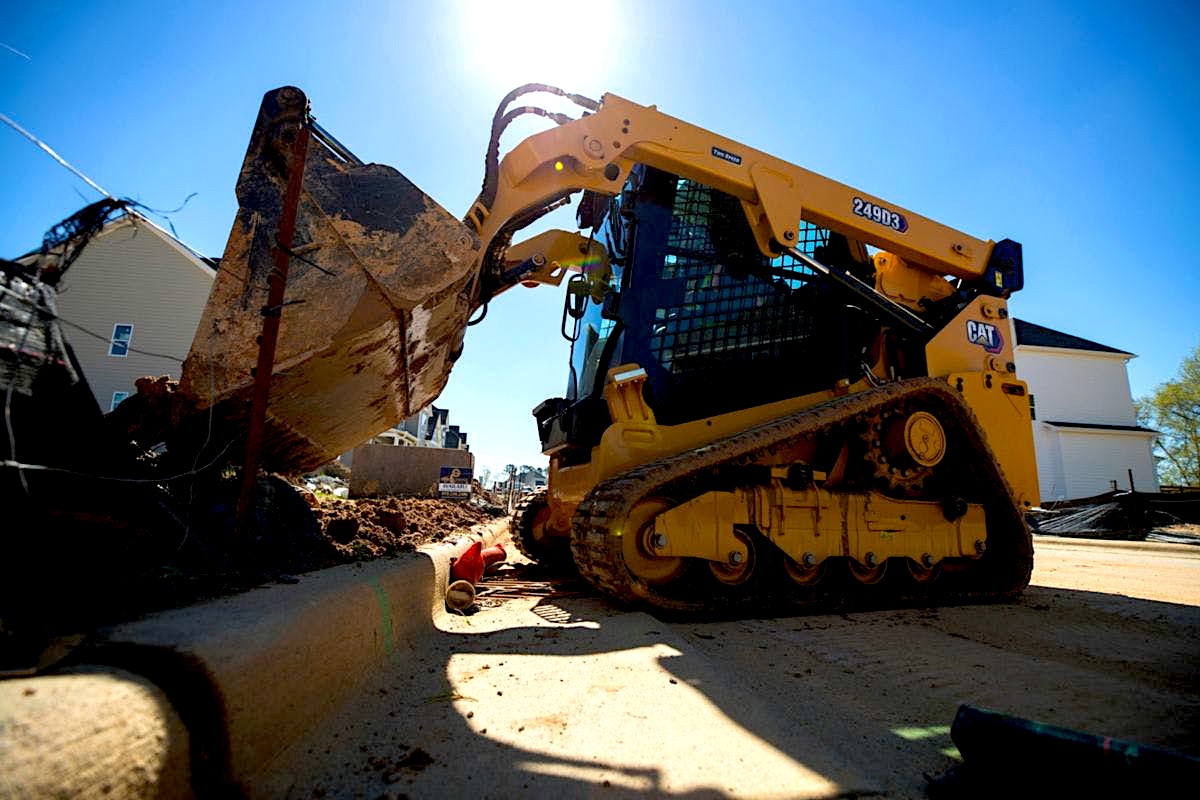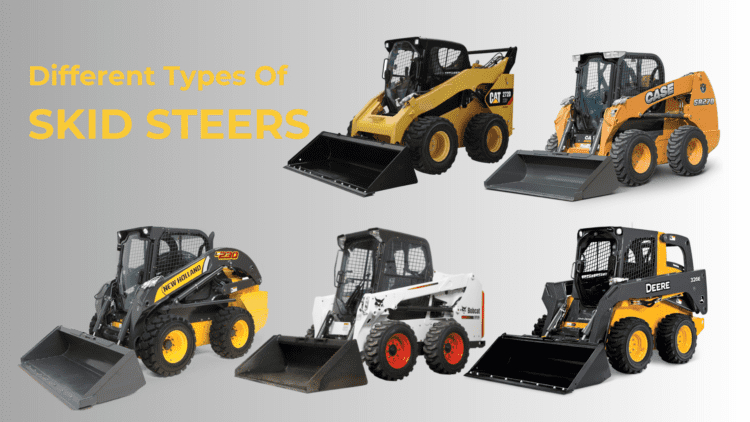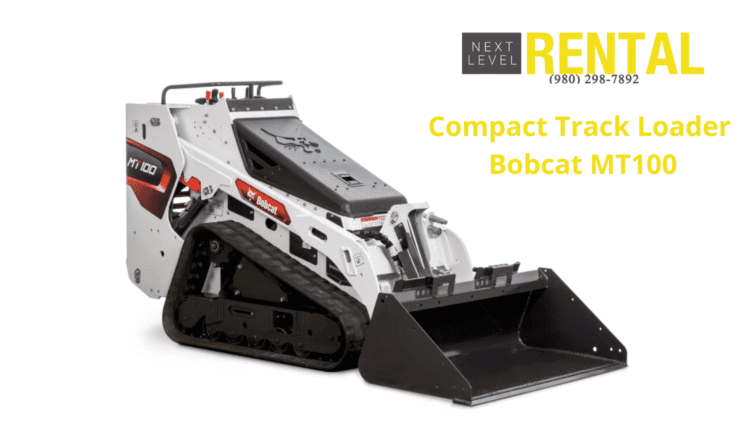Skid steers are essential pieces of machinery in the construction industry, known for their versatility, power, and compact design. They are used in various applications, from landscaping and excavation to material handling and demolition. With numerous types and attachments available, skid steers can be tailored to meet specific job site requirements.
What is a Skid Steer
A skid steer is a compact, rigid-frame machine with lift arms that can be fitted with a variety of attachments to perform a wide range of tasks. They are characterized by their unique steering system, where the wheels on each side can operate independently, allowing the machine to “skid” and turn within its own length. This maneuverability makes skid steers ideal for working in tight spaces and on uneven terrain. Skid steers come in various sizes and configurations, each designed for specific applications and operational needs.
The Importance of Skid Steers in Construction
Skid steers play a crucial role in the construction industry due to their versatility, efficiency, and ability to handle a variety of tasks. Their compact size allows them to operate in confined spaces where larger machinery cannot access. Additionally, skid steers are known for their durability and ease of use, making them a preferred choice for many contractors. They can be equipped with different attachments, such as buckets, augers, trenchers, and grapples, to perform a wide range of functions, from digging and grading to lifting and transporting materials. This adaptability makes skid steers invaluable on construction sites, as they can quickly switch between tasks, improving productivity and reducing the need for multiple machines.
Different Types of Skid Steers
Skid steers come in several types, each designed to meet specific operational needs and job site conditions. Understanding the differences between these types can help you choose the right machine for your project.
Type 1. Wheeled Skid Steers
Wheeled skid steers are the most prevalent type, recognized for their speed and agility. Featuring four wheels, they can swiftly traverse job sites. Wheeled skid steers are ideal for hard, flat surfaces such as concrete and asphalt. They are also suitable for applications that require frequent movement across large areas. However, they may not perform as well on soft, muddy, or uneven terrain due to their limited traction.
Type 2. Tracked Skid Steers
Tracked skid steers, also known as compact track loaders, are equipped with tracks instead of wheels. This design provides better traction and stability on soft, uneven, or muddy terrain. Tracked skid steers are ideal for applications that require heavy lifting or working on slopes. They distribute weight more evenly, reducing ground pressure and minimizing damage to sensitive surfaces. While tracked skid steers are slower than wheeled models, their ability to operate in challenging conditions makes them a valuable asset on many job sites.
Type 3. Compact Skid Steers
Compact skid steers are smaller and are designed for tasks in tight or confined spaces. They are lightweight and highly maneuverable, making them ideal for indoor projects, landscaping, and urban construction. Despite their smaller size, compact skid steers are powerful and can be equipped with various attachments to perform a wide range of tasks. They are perfect for jobs that require precision and agility, such as grading, digging, and material handling in restricted areas.
Type 4. Medium Frame Skid Steers
Medium frame skid steers are versatile machines that balance power and maneuverability. They are larger than compact skid steers but still offer a high degree of agility and control. Medium frame skid steers are suitable for a variety of applications, including excavation, grading, and material handling. They provide a good combination of power and size, making them a popular choice for many construction projects. These machines can handle more demanding tasks while still being able to operate in relatively confined spaces.
Type 5. Large Frame Skid Steers
Large frame skid steers are the most powerful type, designed for heavy-duty applications. They have higher horsepower, greater lifting capacity, and larger operating weights, making them ideal for demanding tasks such as demolition, excavation, and heavy material handling. Large frame skid steers are equipped with robust engines and hydraulic systems, allowing them to handle the toughest job site conditions. However, their larger size may limit their maneuverability in tight spaces, making them more suitable for open job sites where power and capacity are prioritized.
Type 6. Radical Lift Skid Steers
Radial lift skid steers are characterized by their lift arm design, which arcs out and up, providing excellent reach and digging performance. This design is ideal for tasks that require digging and grading at or below ground level, such as trenching and excavation. Radial lift skid steers offer good visibility and are often preferred for tasks that involve significant ground interaction. Their simple lift path makes them efficient for applications that do not require high lift heights.
Type 7. Vertical Lift Skid Steers
Vertical lift skid steers have lift arms that move in a more linear, vertical path, providing greater reach and lift height compared to radial lift models. This design is ideal for tasks that require lifting and loading materials into trucks or hoppers, such as material handling and site cleanup. Vertical lift skid steers offer excellent stability and balance, making them suitable for tasks that involve heavy lifting at higher elevations. Their lift path provides a consistent lifting capacity throughout the range of motion, enhancing their versatility and efficiency.
Popular Types of Skid Steer Attachments
The versatility of skid steers is significantly enhanced by the wide range of attachments available. These attachments allow skid steers to perform various tasks, making them invaluable on construction sites. Some of the most popular skid steer attachments include:
- Buckets. Used for digging, lifting, and moving materials. Buckets come in various sizes and types, including general-purpose, rock, and grapple buckets.
- Augers. Ideal for drilling holes for posts, trees, and foundations. Augers come in different sizes and configurations to suit various soil types and conditions.
- Trenchers. Used for digging trenches for utilities, irrigation, and drainage. Trenchers are available in different widths and depths to match specific project requirements.
- Grapples. Perfect for handling and moving large, irregularly shaped objects such as logs, rocks, and debris. Grapples come in various designs, including root grapples, brush grapples, and log grapples.
- Pallet Forks. Used for lifting and transporting pallets and other materials. Pallet forks are essential for material handling and logistics on construction sites.
- Hydraulic Breakers. Ideal for breaking up concrete, asphalt, and other hard materials. Hydraulic breakers are powerful attachments that can handle tough demolition tasks.
- Brooms and Sweepers. Used for cleaning job sites, streets, and parking lots. Brooms and sweepers can quickly and efficiently remove debris and keep work areas clean.
- Backhoes. Attachments that convert skid steers into mini-excavators. Backhoes are used for digging, trenching, and excavation tasks.
- Snow Blowers. Used for clearing snow from driveways, sidewalks, and parking lots. Snow blowers are essential for winter maintenance and snow removal.
- Tillers and Cultivators. Ideal for landscaping and agricultural tasks. Tillers and cultivators can prepare soil for planting and gardening.
The Bottom Line
Skid steers are versatile, powerful machines that play a vital role in the construction industry. Their ability to perform a wide range of tasks with various attachments makes them indispensable on job sites. Understanding the different types of skid steers, including wheeled, tracked, compact, medium frame, large frame, radial lift, and vertical lift models, helps in selecting the right machine for specific applications.
Additionally, the availability of numerous attachments enhances the functionality of skid steers, making them suitable for digging, lifting, grading, and material handling tasks. By choosing the appropriate skid steer and attachments, construction professionals can significantly improve productivity, efficiency, and job site performance.




